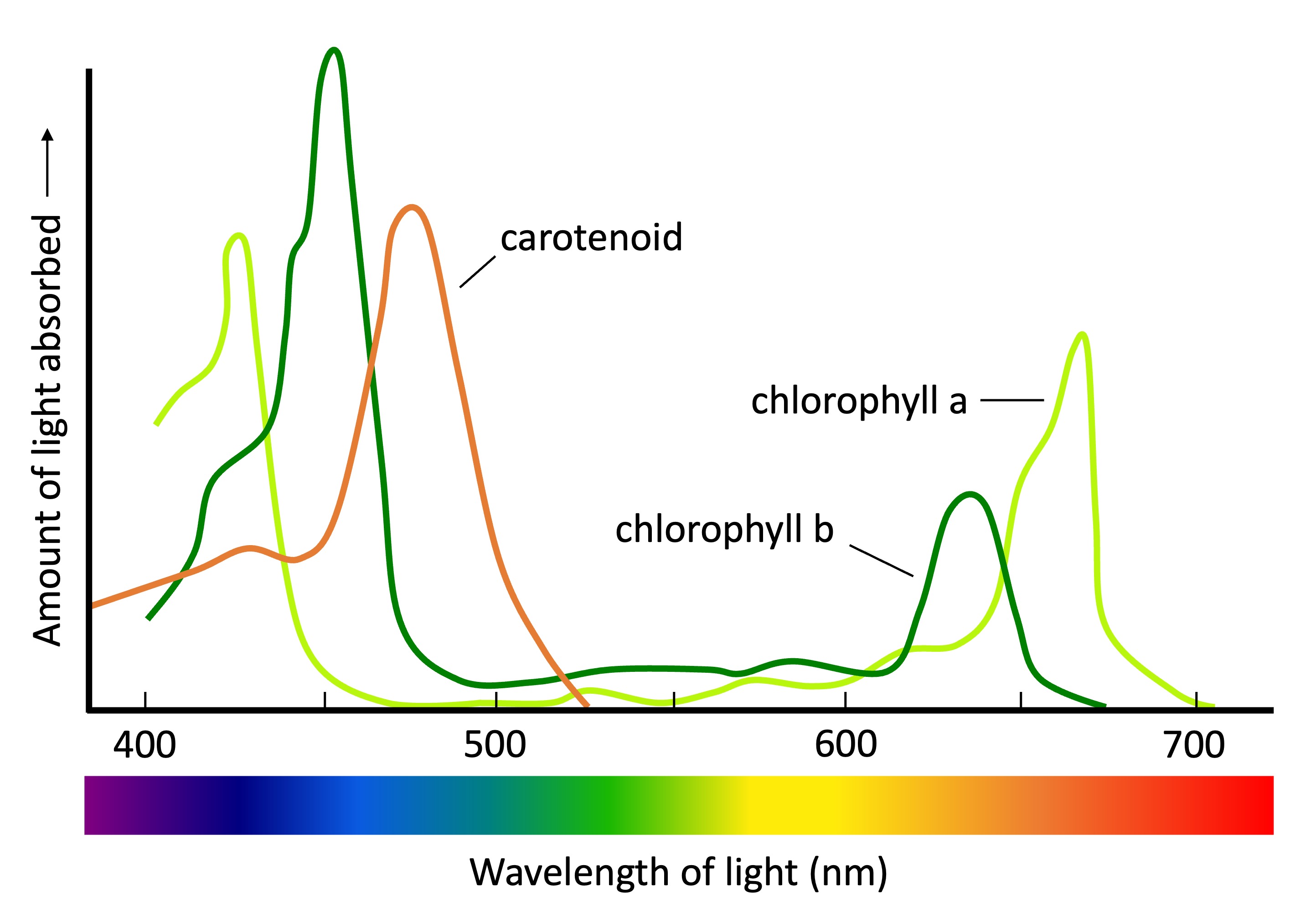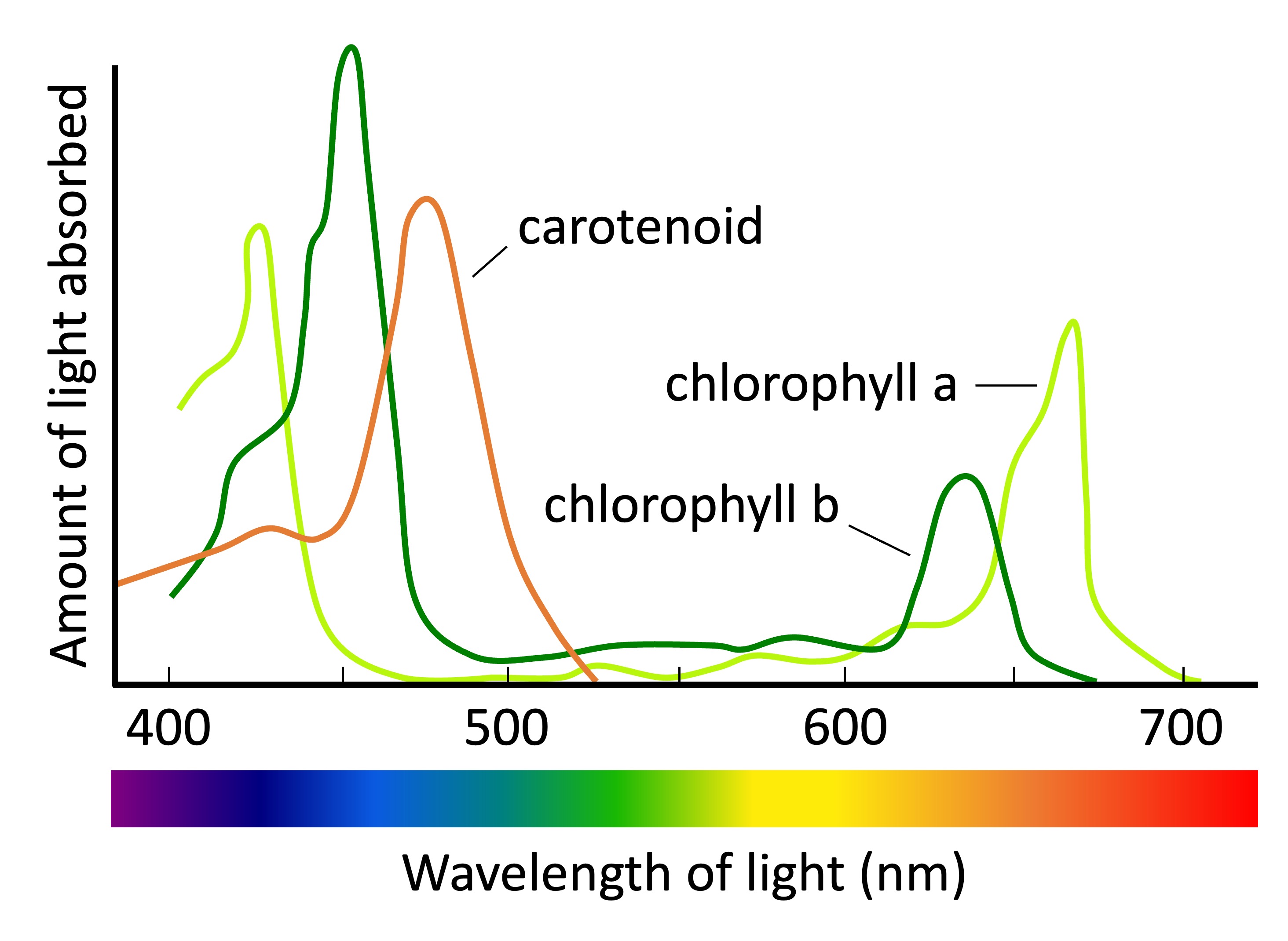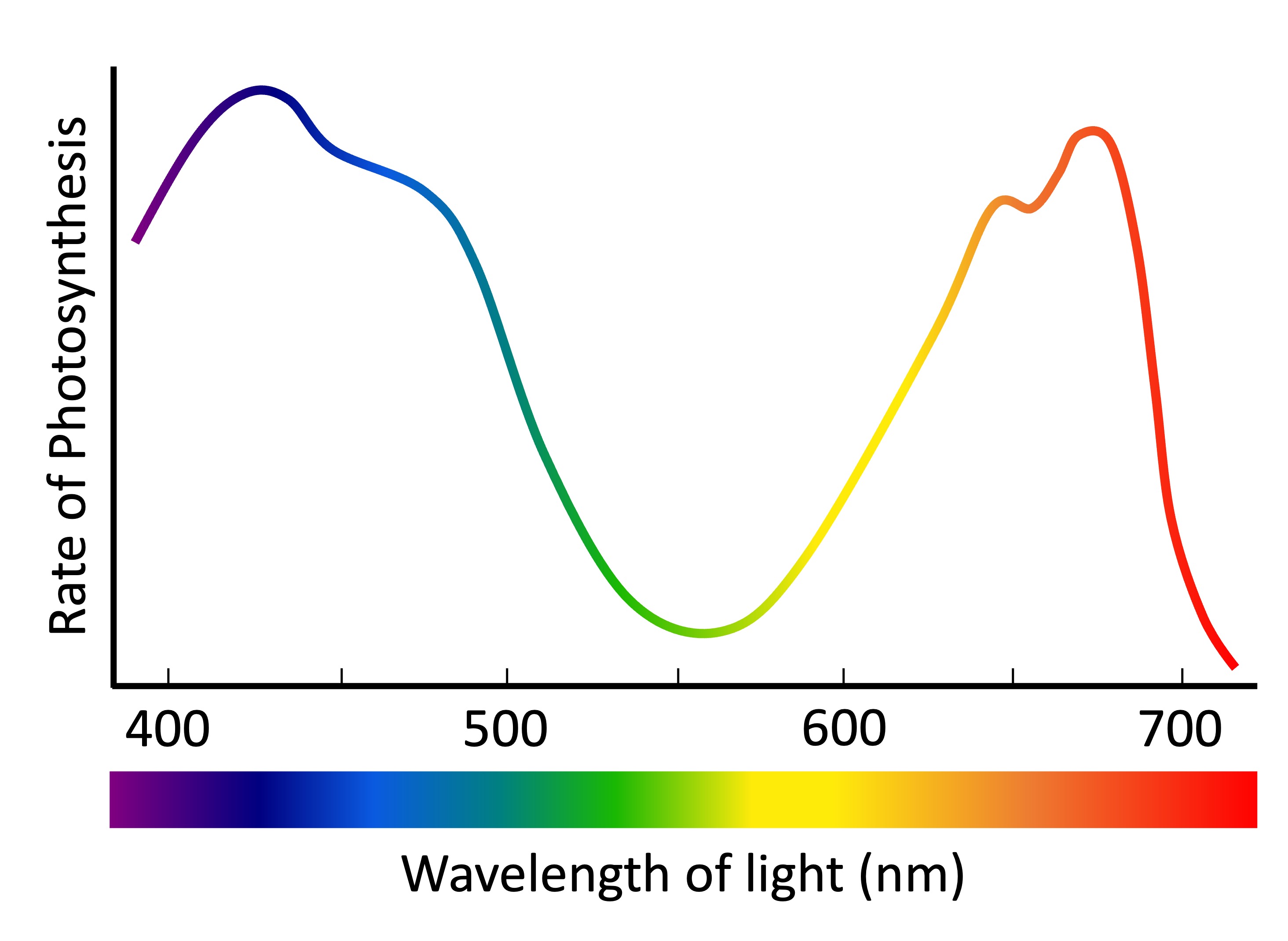

Action Spectra
Pigments absorb light as a source of energy for photosynthesis
-
The absorption spectrum indicates the wavelengths of light absorbed by each pigment (e.g. chlorophyll)
-
The level of absorbance can be quantitatively measured using a device called a spectrophotometer
-
-
The action spectrum indicates the overall rate of photosynthesis at each wavelength of light
-
The rate of photosynthesis can be measured by either the rate of carbon dioxide consumption or the level of oxygen production
-
There is a strong correlation between the cumulative absorption spectra of all pigments and the action spectrum
-
Both display two main peaks – a larger peak at the blue region (~450 nm) and a smaller peak at the red region (~670 nm)
-
Both display a trough in the green / yellow portion of the visible spectra (~550 nm)
Collectively, this demonstrates that photosynthetic pigments absorb red and blue light most effectively and reflects green light more than other colours








